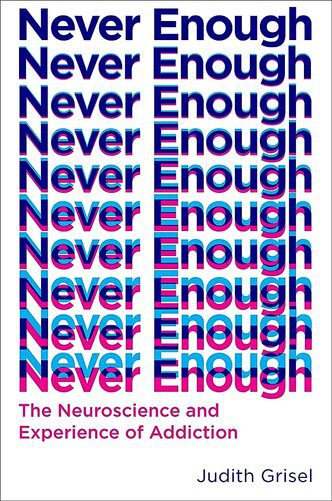In Never Enough: The Neuroscience and Experience of Addiction, behavioural neuroscientist and recovering addict Judith Grisel shares how she transforms her life from a daily drug user and college dropout to becoming a renowned behavioural neuroscientist. She writes about the lessons learned in her over twenty-five years of experience as a researcher studying the neuroscience of addiction. The principles thus shed light on the biological dead end that perpetuates substance use and abuse: namely, that there will never be enough drugs because the brain’s capacity to learn and adapt is infinite.
Understanding the mechanisms behind every addict’s experience makes it very clear that short of death or long-term sobriety there is no way to quell the screaming need between exposures. At the point where pathology determines behavior, most addicts die trying to satisfy an insatiable drive.
As a homeless 22-year-old in 1985, Judith was at the good end of bad drug deal which lead to her compulsive use of drugs especially cocaine. Realising that her addiction was a biological problem she decided to cure the disease by eliminating the problems caused by using drugs. Judith went on to get a Ph.D. in behavioral neuroscience in the process becoming an expert in the neurobiology, chemistry and genetics of addictive behaviour field.
The Drug Abuse Epidemic
- Addiction today is epidemic and catastrophic. If we are not victims ourselves, we all know someone struggling with a merciless compulsion to remodel experience by altering brain function. The personal and social consequences of this widespread and relentless urge are almost too large to grasp.
- In the United States, about 16 percent of the population twelve and older meet criteria for a substance use disorder, and about a quarter of all deaths are attributed to excessive drug use.
- With more than one in five people over the age of fourteen addicted, drug abuse has been called the most formidable health problem worldwide.
- Worldwide, addiction may be the most formidable health problem, affecting about one in every five people over the age of fourteen.
- In purely financial terms, it costs more than five times as much as AIDS and twice as much as cancer. In the United States, this means that close to 10 percent of all health-care expenditures go toward prevention, diagnosis, and treatment of people suffering from addictive diseases, and the statistics are similarly frightening in most other Western cultures.
- Although reliable estimates are hard to come by, most experts agree that no more than 10 percent of substance abusers can manage to stay clean for any appreciable time. As far as illnesses go, this rate is almost singularly low: one has about twice as good a chance of surviving brain cancer.
“The opposite of addiction is not sobriety but choice.”
Our Addictions and choices
All of us face countless choices, and there is no bright line separating good and bad, order and entropy, life and death. Perhaps as a result of following rules or conventions, some live under the delusion that they are innocent, safe, or deserving of their status as well-fed citizens. But if there is a devil, it lives inside each of us.
Three Laws of Psychopharmacology
The very definition of an addictive drug is one that stimulates the mesolimbic pathway, but there are three general axioms in psychopharmacology that also apply to all drugs:
All drugs act by changing the rate of what is already going on.
The terrible truth for all those who love mind-altering chemicals is that if the chemicals are used with regularity, the brain always adapts to compensate. An addict doesn’t drink coffee because she is tired; she is tired because she drinks coffee. Regular drinkers don’t have cocktails in order to relax after a rough day; their day is filled with tension and anxiety because they drink so much. Heroin produces euphoria and blocks pain in a naive user, but addicts can’t kick a heroin habit, because without it they are in excruciating pain. The brain’s response to a drug is always to facilitate the opposite state; therefore, the only way for any regular user to feel normal is to take the drug. Getting high, if it occurs at all, is increasingly short-lived, and so the purpose of using is to stave off withdrawal.



Comments are closed.